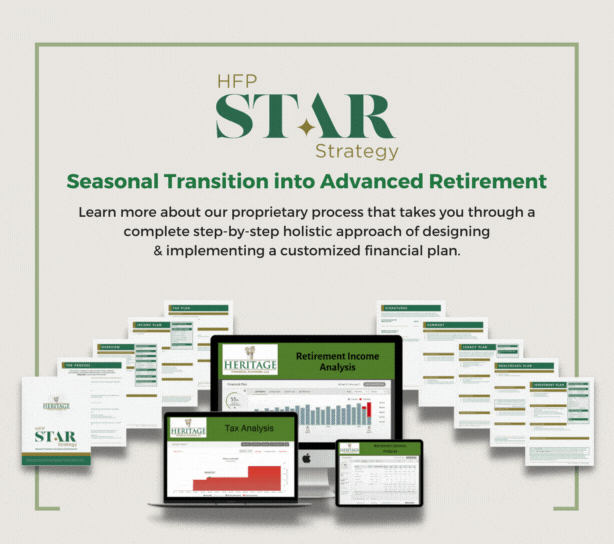Fed policy is important, but there are a lot of factors that influence markets.
As the Federal Reserve’s September FOMC (Federal Open Market Committee) meeting approaches, speculation abounds regarding by how much – not whether – the Fed will cut interest rates. For many investors, this question is of paramount importance, as Fed policy can significantly impact financial markets. However, the extent of a rate cut and its potential implications are far from straightforward, and attempting to time investment decisions around such events can be fraught with danger. Understanding the nuances of Fed policy, along with recognizing the myriad other factors that influence investment outcomes, is critical for all long-term investors.
Current Economic Context and Fed Policy
The U.S. economy has shown resilience in 2024, marked by strong labor markets, moderate inflation, and steady consumer spending. However, uncertainties remain, particularly regarding inflationary pressures and the potential for a recession. The Fed’s dual mandate – to promote 1) maximum employment and 2) stable prices – has led it to adopt a cautious approach. Following a series of aggressive rate hikes in 2022 and 2023 to combat soaring inflation, the Fed has shifted to a more data-dependent stance, with recent communications indicating a willingness to pause further rate hikes if inflation continues to trend downward. As of late August 2024, the likelihood of a rate cut in September is not widely debated – the debate is more around whether it will be 25 or 50 basis points.
In the “50 bps Camp” are those who point to inflation moderating, with the latest Consumer Price Index readings showing a year-over-year increase of 2.9%, down from the peak of 9.1% in June 2022, the highest level since 1981. Additionally, concerns over slowing global growth, particularly in China and the Eurozone, might prompt the Fed to aggressively attempt to prevent a sharp downturn in the U.S. economy.
Those in the “25 bps Camp” think the Fed will remain cautious about declaring victory over inflation too soon. They point to the fact that core inflation, which excludes volatile food and energy prices, remains stubbornly high, and the labor market, while softening, is still tight. Moreover, Fed officials have repeatedly emphasized the importance of avoiding the mistakes of the 1970s, when premature rate cuts led to a resurgence of inflation. As a result, those in the “25 bps Camp” believe that the Fed may opt to move slowly, adopting more of a wait-and-see approach until additional and more conclusive data is available.
Perils of Timing Investments Based on Fed
Given the uncertainty surrounding Fed policy, some investors may be tempted to time their investment buys and sells around the anticipated actions of the FOMC. This strategy, however, is fraught with risk. The dangers of timing the market are well-documented, with numerous studies showing that even professional investors struggle to consistently predict market movements based on macro events.
One of the primary dangers of attempting to time investments around Fed moves is the inherent unpredictability of monetary policy. The Fed’s decisions are influenced by a wide range of economic indicators, geopolitical developments, and even market expectations. As a result, Fed policy is notoriously difficult to forecast, and market reactions to Fed announcements can be equally unpredictable. A rate cut, for example, may not necessarily lead to a market rally if investors interpret the move as a sign of impending economic weakness.
Additionally, trying to time the market based on Fed policy can lead to emotional decision-making, which is often detrimental to long-term investment success. Investors who attempt to buy or sell based on short-term Fed moves may find themselves caught in a cycle of fear and greed, chasing market trends rather than sticking to a disciplined investment strategy. This behavior can lead to costly mistakes, such as selling during market downturns or missing out on potential gains by staying on the sidelines.
Beyond the Fed: Other Inputs for Investing
While Fed policy is undoubtedly an important factor in financial markets, it is just one of many inputs that should inform your investment strategy. A well-rounded approach to investing requires consideration of several other equally important factors, including:
Corporate Earnings and Valuations: Corporate earnings are a key driver of stock prices, and understanding the earnings potential of individual companies or sectors can provide valuable insights into where to allocate capital. Valuations, such as the price-to-earnings (P/E) ratio, also play a crucial role in determining whether a stock is attractively priced relative to its earnings potential.
Global Economic Conditions: The health of the global economy has a significant impact on financial markets, particularly for multinational companies with exposure to international markets. Factors such as trade policies, currency exchange rates, and economic growth in key regions should be considered when making investment decisions.
Geopolitical Risks: Geopolitical developments, such as conflicts, elections, and policy changes, can create volatility in financial markets. Investors should be aware of potential geopolitical risks and consider how they might impact specific sectors or regions.
Interest Rates and Credit Markets: While Fed policy influences interest rates, broader credit market conditions, including corporate bond spreads and credit availability, also play a critical role in the economic environment. Monitoring these indicators can help investors gauge the health of the economy and the potential for future growth.
Technological and Sectoral Trends: Technological advancements and sectoral shifts can create both opportunities and risks for investors. Staying informed about emerging technologies, changing consumer preferences, and industry-specific developments can help investors identify potential growth areas and avoid sectors in decline.
Diversification and Risk Management: A well-diversified portfolio that spreads risk across different asset classes, sectors, and geographies is essential for long-term investment success. Diversification can help mitigate the impact of adverse events in any one area and reduce overall portfolio volatility.
A Balanced Approach to Investing
While the Fed’s September FOMC meeting will undoubtedly attract significant attention, it is important for investors to maintain a balanced perspective. Fed policy is just one of many factors that influence financial markets, and attempting to time investments based on anticipated Fed moves is a risky strategy that can lead to suboptimal outcomes.
Instead, investors should focus on developing a diversified, long-term investment strategy that takes into account a broad range of factors, including corporate earnings, global economic conditions, geopolitical risks, and technological trends. By doing so, they can position themselves for success regardless of the Fed’s actions in the months and years ahead.
Working with Heritage Financial Planning
At Heritage Financial Planning, we understand that navigating the complexities of market timing, especially around major events like Fed policy changes, can be daunting. That’s why our HFP S.T.A.R. Strategy process focuses on a holistic approach to investing, helping clients stay grounded with long-term goals, diversification, and risk management. Instead of reacting to short-term fluctuations, we prioritize a balanced, disciplined investment strategy.

Click here to learn more about our HFP STAR Strategy process.
Ready to secure your financial future with expert guidance? Contact our office today to schedule an appointment and learn how the HFP S.T.A.R. Strategy can work for you.
Source: Copyright © 2024 FMeX. All rights reserved. Distributed by Financial Media Exchange.












